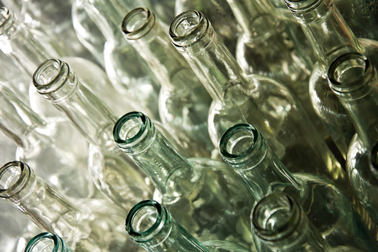
Glass is one of the oldest recyclable, man-made materials on Earth, usable in a variety of ways.
In ancient Egypt, broken glass was melted down and reused.
Egyptians already knew that glass can be recycled indefinitely without losing its liquid properties – even if it is melted down.
But how does recycling happen? How do you obtain a useful product out of melted material?
The process of glass recycling involves cleaning, crushing, heating and molding the glass into the new product. As glass is versatile, it can create inflexible as well as flexible products. If you “spun” glass into thin, flexible threads, you will obtain fiberglass, a product that is pressed and used in insulation.
Here is a brief explanation of each step of glass recycling:
1. Separation into colors
If there is only green glass to recycle, the final result will be only green glass items; that’s because once pigment is added to glass it can never be removed. This is why in the recycling process, the first step is to separate colors. If colors are mixed by mistake or the glass is contaminated with other material, it can be used to make items where good color and purity are not essential.
2. Crushing
Once the glass is separated, it is crushed by a machine, and renamed “cullet.” At this point other ingredients like limestone, soda ash, and silica are added but other ingredients may add as well. This step is called “batching” and occurs before the glass is melted.
3. Heating
The cullet mixture is heated in a furnace at around 1500ºC. Once it becomes a red-hot, thick liquid similar to honey, it is poured into molds.
4. Molding
In the final step of the recycling process, the now new glass is blown with air into the molds to make the proper shape: bottles, jars, decorative bowls, flower vases, etc.
Finally, the new products are shipped to the stores where they will be sold as new “recycled” products.
Recycling a metric ton of glass saves almost 700 pounds of carbon dioxide from being released into the atmosphere and creates beautiful pieces that are sure to last.

